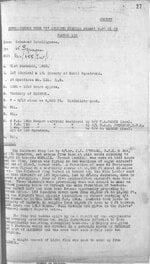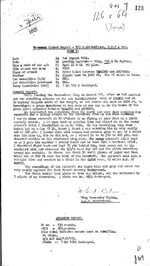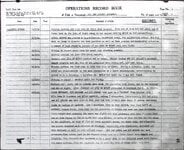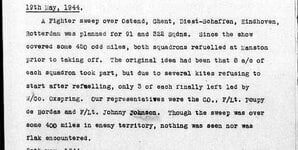FLYBOYJ
"THE GREAT GAZOO"
Is this indicated in any performance chart?If you make up a Spitfire VIII using the various maximum size fuel tanks ever fitted to Merlin Spitfires with the external and/or rear fuselage tanks able to refill the main tanks after take off, the theoretical combat radius comes to around 500 miles, cruising all the way at maximum weak-mixture power setting of 320 mph at 20,000 feet using 66 gallons per hour, corresponding with an engine setting of 2,400 rpm, +4 lbs boost. Which translates to much but not all of Germany when based in England, taking direct courses. The requirements for combat, reserves and the need to burn off some of the rear fuselage fuel before combat means the external fuel limit is about 90 gallons.




